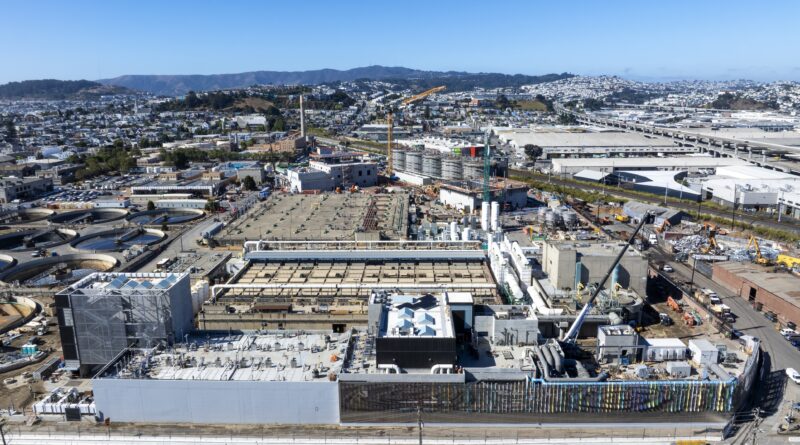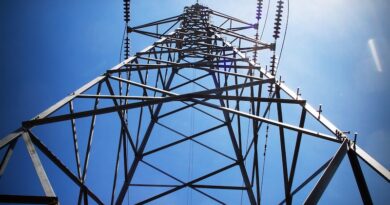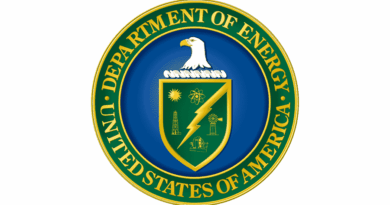San Francisco Celebrates Major Infrastructure Milestone
Originally built in 1952, the Southeast Treatment Plant is San Francisco’s largest and oldest wastewater facility. It plays a vital role in serving the Bayside Watershed and nearly two-thirds of the city’s population, handling roughly 80 percent of San Francisco’s total annual flow through the Bayside combined sewer system.
Originally, the plant relied on two separate headworks facilities to manage operations during both dry and wet weather, accommodating the highly variable flow rates caused by the city’s combined sewer system and large storage capacity. At the start of this project, one headworks facility was over 20 years old, and the other had exceeded 30 years in service. Neither of them met the performance standards set by the SFPUC, particularly in areas such as screenings and grit capture, process reliability and odor control. Effective fine grit removal at the headworks became especially critical with the construction of new digestion and solids handling processes, which are highly sensitive to grit.
This project marked a major transformation in the plant’s aging infrastructure, modernizing wastewater treatment capabilities, improving system resilience and delivering lasting benefits to the surrounding community. It introduced a state-of-the-art, all-weather headworks facility capable of treating 250 million gallons per day (mgd), replacing the two outdated systems and significantly improving the performance and reliability of screenings and grit removal.
City staff collaborated closely with Carollo Engineers (Design Engineer) and a Sundt-Walsh Joint Venture (Construction Manager/General Contractor) to overcome extreme space constraints, project disruptions due to the COVID-19 pandemic and unique seismic challenges.
“The team used phased construction and a “demolish-to-build” approach to minimize impacts to daily operations and eliminate major disruptions to service,” said Jignesh Desai, P.E., Principal Project Manager, SFPU. “Delivered across three phases, the team first completed a site preparation scope that included construction of a permanent influent junction structure and installed a temporary 100 mgd reroute system, this allowed for demolition of the wet weather headworks without compromising the plant’s treatment capacity year-round.”
The team then completed heavy upgrades and modifications on a 150 mgd pump station located across the street from the plant before finally constructing the all-weather headworks facility and rehabilitating the on-site 50 mgd influent pump station.
The Southeast Treatment Plant is situated in a tightly confined urban environment surrounded by a complex mix of infrastructure, including a four-lane city street, railroad tracks, the facility’s main electrical feed, a major internal roadway and existing process structures. The limited footprint demanded innovative approaches to design and construction in order to deliver a new headworks facility that could meet ambitious performance targets within the tight site.
The design also offered operational flexibility by allowing active control of the hydraulic grade line to accommodate flows ranging from 15 to 250 mgd, maintaining optimal velocities and preventing sediment buildup without sacrificing process efficiency. The streamlined layout improved operations and freed up valuable space within the plant.
The project took place during a unique time, the COVID-19 pandemic hit in early 2020 and the project was already under construction. It faced soaring material and labor costs, fuel price spikes, and severe supply chain disruptions, pushing the budget over by $100 million. These challenges demanded immediate design adjustments and creative cost-cutting measures. Despite social distancing constraints and delivery delays, the team pivoted to a progressive design-build model, enabling construction to proceed while adapting designs in real time.
The original project plan called for demolishing an aging pump station and building a new one at a different site. However, that approach became financially unviable. The team now faced two critical challenges: identifying $100 million in cost savings without compromising quality or timeline, and reassessing the scope and strategy for the pump station.
In response, the team pivoted to rehabilitating the existing pump station instead of pursuing a full replacement. While not part of the original scope, this decision preserved project momentum and significantly reduced costs. The team executed a comprehensive upgrade, modernizing systems, improving performance and reinforcing the structure to meet capacity needs and seismic resilience standards.
Despite these challenges, the project team employed innovative design and construction strategies that enabled them to complete the work on time and within budget. Incorporating sustainability and energy efficiency was a central focus throughout the process.
The Southeast Treatment Plant also introduced a best-in-class grit removal, washing and dewatering system. This process effectively separates organic and inert materials, significantly reducing landfill waste and enhancing readiness for advanced digestion technologies that will bring even greater environmental benefits in the future.
Architecturally, the facility was designed with sustainability in mind. Large windows and skylights were strategically placed to maximize natural light and reduce reliance on artificial lighting. Energy-efficient LED fixtures and photocell-controlled exterior lights further minimize energy use during inactive periods. Additionally, where feasible, roof-mounted photovoltaic panels were installed to harness solar energy and convert it into electricity.
This stands as a model for how essential infrastructure can address environmental challenges, build resilience to climate change and enhance the community’s well-being. The team committed to being a good neighbor by tackling long-standing community concerns and creating new aesthetic and social value.
A centerpiece of this effort is a state-of-the-art two-stage odor control system that virtually eliminates unpleasant odors, an issue that had long affected nearby residents. The system, which uses biotrickling filters and carbon absorbers, represents a major investment by SFPUC and a significant step toward improving quality of life in the area.
Beyond environmental and operational upgrades, the project embraces community engagement through public art. Rather than presenting an institutional industrial façade, the facility showcases creative works by local artists, making the space more inviting and educational, such as a permanent 335-foot-long by 35-foot-high mural titled “Whorl Whirl: Our Circular Nature” and four temporary murals on construction fencing; supporting local workforce development and STEM education initiatives.
Through flexible, creative solutions and strategic decision-making, the team managed to complete the project on time and within the approved budget. They achieved $100 million in cost savings by pivoting to alternative approaches such as rehabilitating existing infrastructure instead of full replacement. Throughout construction, continuous wastewater treatment operations were maintained, thanks to complex construction phasing and close coordination in a highly space-constrained environment. Additionally, the team implemented an innovative seismic design, using drilled piers to support the existing structure from above, ensuring long-term structural integrity and safety.
SFPUC Teams are excited about the start-up of Treasure Island Resource Recovery Facility Project and the completion of the Biosolids Digester Facilities Project – including the Biogas Utilization Project – in Spring 20208. Both of these projects have also achieved Envision Platinum by the Institute for Sustainable Infrastructure.
In addition, they began the planning phase of the Nutrient Reduction Project, also Southeast Treatment Plant, which will significantly long-term nutrient load reductions and continue to protect public health and the environment of the San Francisco Bay.
Speaking of excitement, the project is the first wastewater headworks project in the country and first ever project for the City and County of San Francisco to earn an Envision Gold Award, demonstrating an exceptional commitment to sustainable infrastructure development.
The San Francisco Public Utilities Commission (SFPUC) remains committed to delivering high-quality drinking water and reliable wastewater services to the city of San Francisco, while also supplying wholesale water to three Bay Area counties. In addition, the agency provides clean, renewable hydroelectric and solar energy to city departments and powers San Francisco homes and businesses through its CleanPowerSF and Hetch Hetchy Power programs.
With a strong focus on environmental responsibility and community partnership, SFPUC prioritizes the protection and sustainable use of natural resources. The agency is nationally recognized for its outstanding service, environmental stewardship and forward-thinking innovation.
By Karla Valdez. She can be reached at karla@builder.media.
This article appears in the August/ September issue of American Infrastructure,





